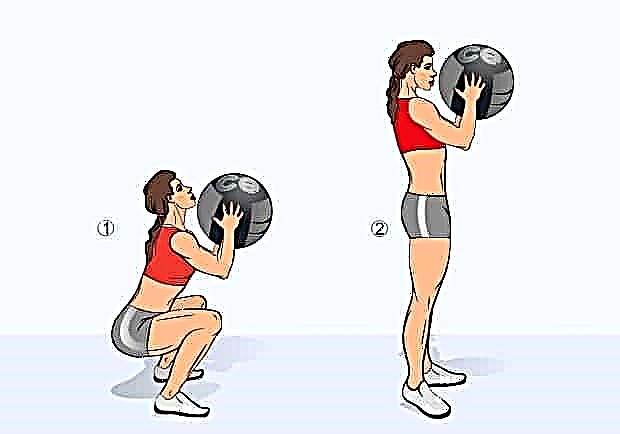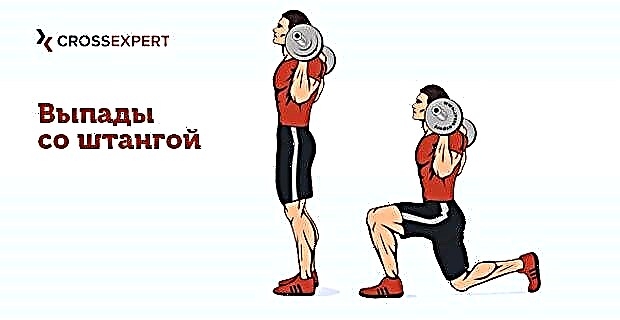The principles of interval training have been successfully applied to both cardio and strength training (although the first option is much more common). Many people think of interval training as a form of circuit training. Indeed, these two approaches are similar, but there is still a difference. During the circle exercises, we perform several exercises in a circle in a classic strength manner, resting only after each circle. In interval strength training, we alternate between high-intensity and low-intensity training, resting after each set, allowing the heart rate to recover.
High-intensity exercise refers to dynamic strength exercises or fast-paced cardio. Low-intensity activity can be light cardio, rest, or static exercises.
This training method is much more complicated than it might seem at first glance. Let's consider what the benefits of interval training are, find out who they are contraindicated for, and suggest an interval training program in the gym.
What is interval training?
Interval training is when we consistently perform work at different levels of intensity. High intensity implies maximum or near-maximum speed (in the case of cardio), a large number of repetitions, work almost to failure (in the case of strength exercises) and a high heart rate (average 80-95% of maximum).
Maximum heart rate (MHR) is calculated by the formula:
- For men: 208 - 0.7 * age in years.
- For women: 206 - 0.88 * age in years.
Beginners need to train, trying to keep the heart rate equal to about 80-85% of this number. 95% of the MHR is the upper permissible limit that cannot be exceeded, and it is also undesirable to achieve at the first stages of training. Of course, you cannot constantly train with such a heart rate - your heart will not say “thank you” for it. Constant work at the limit of possibilities leads to the development of arterial hypertension and arrhythmias.
An intense period is followed by a calm, low-intensity exercise. Most often, athletes prefer to jog or walk with a heart rate of up to 40-60% of the maximum. In the case of strength training, during this period they simply rest, restoring the pulse. You can also walk slowly. This allows you to recover a little after a heavy load, normalize breathing and prepare the muscles for further work.

© Nadezhda - stock.adobe.com
The benefits of interval training
By exercising in this manner, you will maintain a relatively high heart rate at all times. Due to this, metabolic processes in the body will proceed at a higher rate, and without a rapid metabolism, effective weight loss is impossible.
Most importantly, metabolic processes are accelerated not only during the training itself, but also after it - for up to two days.
This is the main difference from the classic low-intensity cardio, in which the process of fat burning occurs only during the exercise. For this reason, the interval training method is best suited for endomorphs who want to quickly get rid of excess adipose tissue.
Interval training is a great solution for those athletes who don't have time for long strength and cardio workouts. Two to three interval sessions per week will be enough to maintain your current muscle mass, avoid gaining excess fat, and feel toned. You will not lose strength or stamina. The horizontal bars and parallel bars located in the neighboring yard, a jump rope and a pood weight will come to your aid. With this set of equipment you can fully train and progress steadily.
If interval training is used by experienced dryers, a combination of interval cardio and classic strength training is the best option. Set aside different days for them, for example, interval cardio training can be done in the morning 3 times a week, and in the evening on other days you can train in the gym the same 3 times. This combination will allow you to burn fat to the maximum and preserve muscle. This method is not suitable for beginners - the load is too heavy, they simply will not have time to recover. 2-3 interval workouts are enough for them.
The biggest benefit for CrossFit enthusiasts is the development of strength endurance. Strength training during interval training occurs at increased heart rate. Over time, the body adapts and begins to perceive such a load much easier, which will lead to increased strength endurance.
Contraindications
Regular interval training is contraindicated for people with cardiovascular problems. Having arterial hypertension and hypertension, tachycardia, congenital or acquired heart disease or coronary artery disease, you run the risk of harm to your health, exercising with a heart rate above 80% of the maximum.
Take contraindications seriously. Many professional athletes have experienced a hypertensive crisis due to the fact that they did not listen to their bodies and constantly trained, overcoming pain and fatigue. Unhealthy fanaticism and athletic longevity are incompatible things, especially when it comes to strength sports.
Interval training principles
Be as mindful as possible when doing sports. In addition to the obvious things, such as adhering to the correct exercise technique and measured breathing (exhalation is always done with effort), we recommend that you adhere to the following recommendations:
- Overtraining doing this is as easy as shelling pears. High intensity requires careful recovery. Pay as much attention to nutrition and sleep as your exercise.
- The period of low-intensity exercise should be no less than high-intensity. For beginners, it should be 3-5 times larger. Only experienced athletes can equalize these intervals. Remember that your task when doing it is to restore strength and breathing. This cannot be done in a few seconds.
- The duration of the high load period is 10-120 seconds. It is better for beginners to start with 10-15 seconds and gradually increase. Another option for increasing the intensity is to decrease the time of the low-intensity part.
- In total, you can complete 5-15 cycles per workout. The total time is 10-30 minutes.
- Before and after the lesson, you need to carry out a mandatory warm-up and cool-down, respectively.
- Trainings should be regular. It is important to find the optimal training frequency for yourself. 2-3 lessons per week will be enough for beginners, 3-5 for more experienced athletes.
- You don't have to go to the gym. Interval training can be done at home or outdoors.
- Do not take pre-workout supplements before interval training. During a high-intensity exercise, the pulse and so reaches almost the limit values.
- Don't overwork your cardiovascular system with caffeine and other stimulants.
- You can't do such hard workouts on an empty stomach. This will cause your blood glucose levels to drop, which will reduce your performance to zero, and your normal workout will not work.

© oneinchpunch - stock.adobe.com
Types of interval training
So, you now know the basic principles of organizing interval training. Next, we will talk about the most popular types, including the Tabata protocol, the Gershler method, fartlek and others.
Tabata Protocol
This interval training program was developed by Japanese doctor Izumi Tabata and has gained widespread popularity in the fitness environment. According to the Tabata protocol, the time under load should be equal to four minutes, while alternating between heavy and light loads. After one such four-minute approach - a little rest. This mode of operation leads to crazy calorie consumption. But you need to thoroughly follow the recommendations for load distribution, developed by the doctor:
- First, there is a period of high-intensity training: 1 period lasts 20 seconds, during which time you need to do about 30 repetitions in an explosive manner.
- This is followed by a period of rest, it lasts 10 seconds, during this time you can catch your breath a little and concentrate on the exercise.
We repeat all this for four minutes. As a result, you get 8 approaches, after which you can fully relax and recuperate. There can be several such cycles in total, depending on the level of training.
Light exercises like push-ups or bodyweight squats, as well as heavy basic exercises with a barbell or dumbbells are suitable. Bench press, deadlift, two-handed kettlebell swings, or barbell jerk are great. It all depends on the level of the athlete.
Waldemar Gerschler's method
Designed specifically for track and field athletes, this method can be used to easily increase your sprint record. For its full use in practice, a runner needs to know his record time in the hundred meters. Workouts take place with a heart rate monitor.
First, the athlete must run 100 meters, deliberately showing the result 3 seconds less than the maximum. After that, a two-minute break is taken. During this time, you need to completely relax so that your heart rate drops to 120 beats per minute. Then the race is repeated again.
The workout continues until the pulse manages to recover to 120 beats per minute during a two-minute rest. As a rule, the time for such a lesson does not exceed 20-30 minutes.

© Maridav - stock.adobe.com
Fartlek
This program is also designed for running. Its essence lies in the fact that two or more people compete for speed in interval running. The entire competition process consists of 6 periods:
- 10 minutes of slow jogging.
- 10 minutes of fast, intense jogging.
- 5 minutes brisk walking to restore breathing.
- Race 100 meters in a straight line.
- 100 meters of race uphill.
- 5 minutes of slow walking to restore breathing.
Gym training program
The programs above are far from the only options for interval training. Everything is limited only by your imagination and level of physical fitness. You can think of thousands of interval workouts that combine aerobic and anaerobic activity.
As part of the interval training program proposed below, we will do 4 workouts per week, two of them cardio, 2 of them strength. The purpose of this complex is to burn fat and maintain muscle in a calorie deficit.
| Workout # 1 - strength |
|
| Workout # 2 - Cardio |
|
| Workout number 3 - strength |
|
| Workout # 4 - Cardio |
|
As you can see, you can alternate almost any exercise. The main thing is to take breaks and replace the high-intensity activity with a calmer one so that the heart and muscles can calm down a little. In the future, to increase the load, you can increase the periods of high-intensity load or the number of laps and approaches, reduce the rest periods, and take more weight.









